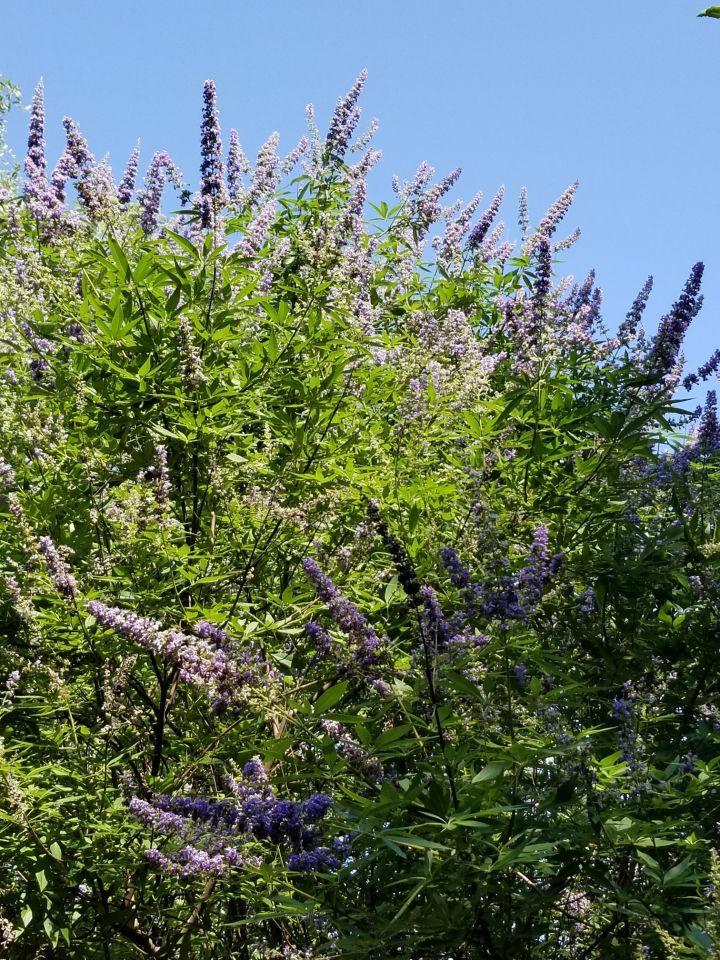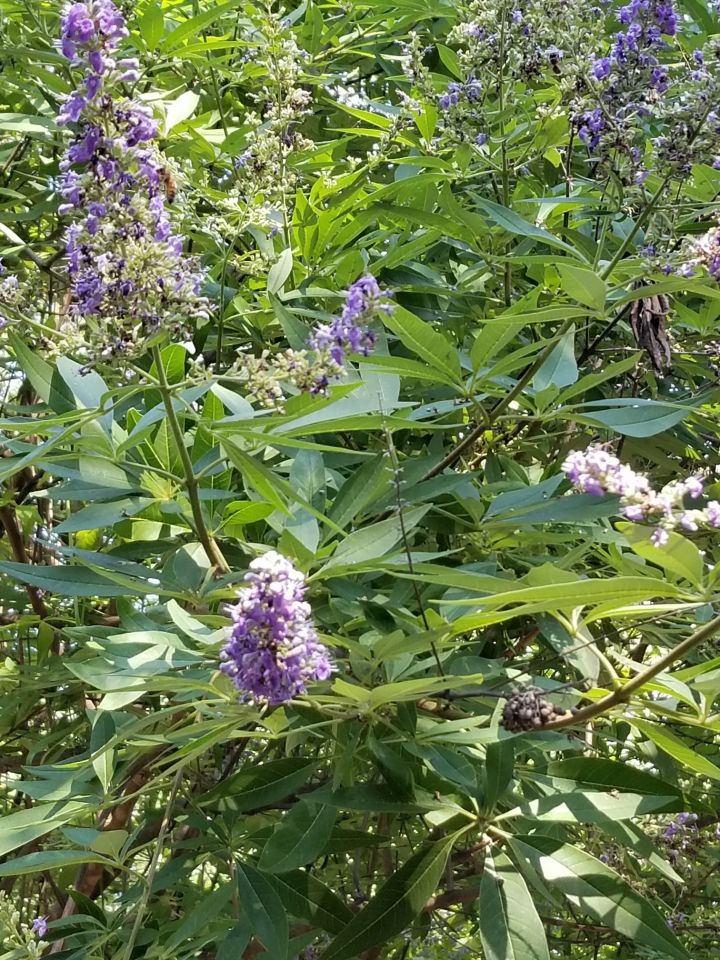Texas-Tough Plant Spotlight: VITEX
June 26, 2018 | By webadmin
Vitex (Vitex agnus-castus), also known as Chaste Tree, is in full bloom in gardens and yards across Texas right now. This small multi-trunked tree is a lovely addition for homeowners looking for beautiful summer color, that is also water-wise and sustainable. Plants are quite the showstopper when the summer flowers open up!

Bountiful Blooms
The long 8-12” flowers spikes of Vitex are most commonly found in a purple-lavender color, but there are also white and soft pink versions. Plants start blooming with a force in May and continue to sporadically bloom throughout summer until the first frost. Plants will bloom heavier if you take time to deadhead spent blooms - but it’s not necessary.
Popular varieties include ‘Shoal Creek’, ‘Montrose Purple’ and ‘Silver Spires’ (a white variety). Vitex has been designated as a Texas Superstar by Texas A&M University.

Pollinator Friendly: Plant Vitex in a full sun location with good drainage, and wait for the butterflies, bees, and hummingbirds to find its flowers.
Size it Up
Upon reaching full size, you can expect a multi-trunked tree that reaches 12-15’ tall and wide, with an open habit. Mind the plant width - make sure you are taking the plants’ mature size into consideration when choosing a plant location. We often see Vitex planted in spaces that are much too narrow, resulting in hard pruning that ruins the shape of the tree. Consider Vitex a specimen tree and give it lots of space. You can also plant it as a large hedge or allay tree, if you have lots of room.
Drought Tolerant
Vitex is a very hardy, heat and drought tolerant plant, which makes it ideal for North Texas landscapes. It originally hails from the Mediterranean and is related to verbena (vervain). As with any new planting, make sure to use supplemental watering for the first year.
Winter Looks
Keep in mind that vitex is deciduous, and will lose its grey-green leaves in the winter. Since this tree is such a quick grower, branches do need to be thinned out to keep from rubbing, while preserving the shape. This is best accomplished in the late fall or winter. Some individuals do choose to cut this plant almost to the ground each year in order to retain a smaller, more shrub-like form. We suggest choosing a larger location for the plant and letting it grow to its true size.
The next time you are looking for a drought tolerant, pollinator friendly, beautiful blooming tree---think of adding Vitex. It will add to your landscape for years to come!
